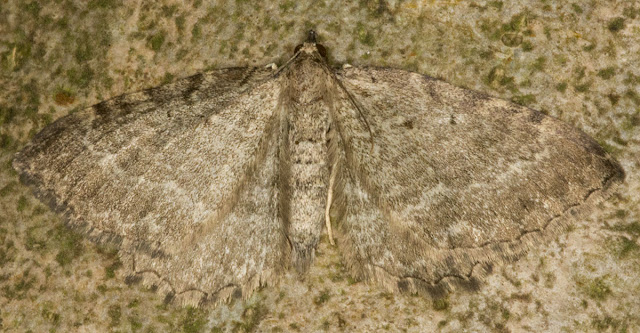 |
| Peppered Moth, Biston betularia. Norbury Park, 17 June 2012. |
There was a "Bioblitz" at Norbury Park; two days of events relating to natural history. I went to look at the moths that had been trapped the night before. Although I saw lots, most of them had been put into plastic tubes and it was impossible to get good photos because of the reflections, and smears on the plastic. But some were shown in the open. This one is on my hand.
It's an iconic species, often used as an example of natural selection. As well as this form there is a dark-winged form that became common in sooty cities, while this speckled form almost disappeared, though it stayed common in the countryside. Birds were able to pick it out easily against the dark city backgrounds. Since the Clean Air Act in 1956, the speckled form has become more common again.
 |
| Brown Scallop, Philereme vetulata. Norbury Park, 17 June 2012. |
This moth, resting on a treetrunk, shows how effective camouflage can be. But not all moths do this.
 |
| Small Elephant Hawkmoth, Deilephila porcellus. Norbury Park, 17 June 2012. |
Many Hawkmoth species appear to try to alarm predators rather than hide from them. Also, they are good fliers and can probably dodge a lot of attacks. Apparently half a dozen of these vivid creatures came to the table next to the trap - exciting for the trappers!
These and other photos from the park are here:
Norbury Park, June 2012. They include a few photos of plants I took while walking back to the car park.



No comments:
Post a Comment